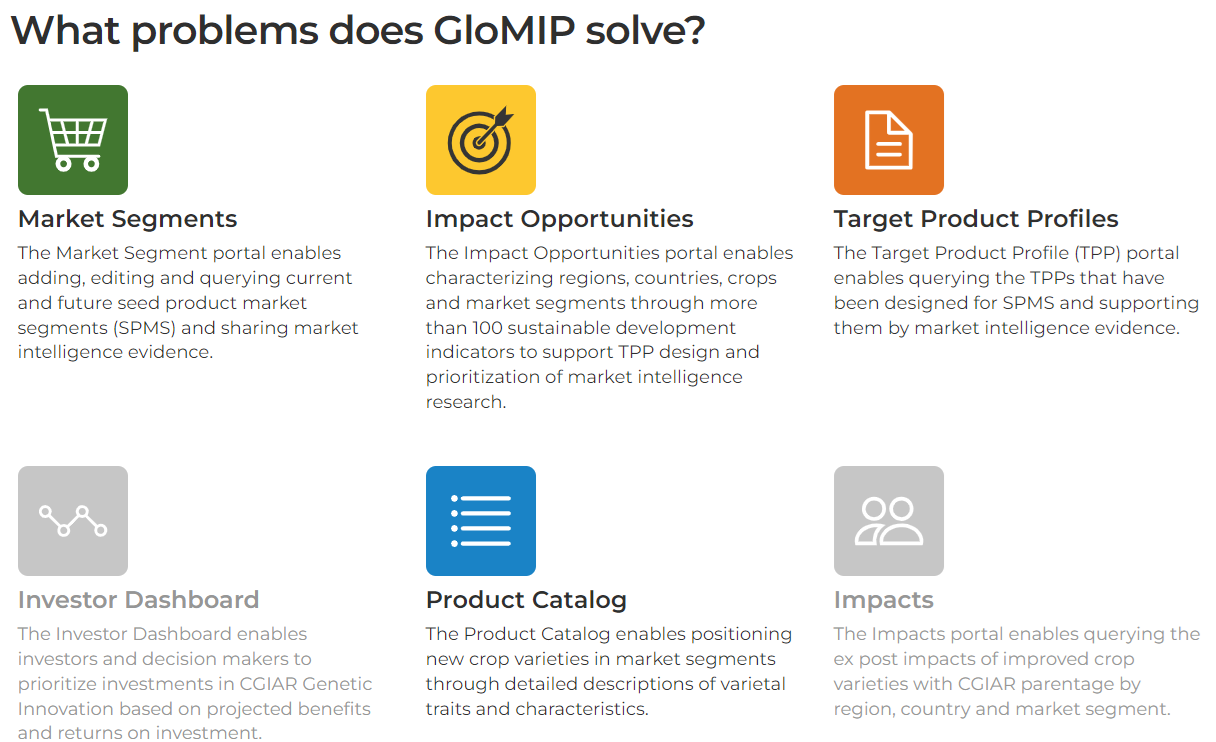
The Global Market Intelligence Platform provides Market Intelligence for Informed Decision-Making in Crop Breeding. GloMIP is a public platform for sharing market intelligence to inform market segmentation, target product profile design, seed systems and investment decision making in crop breeding. GloMIP has been developed by the CGIAR Initiative on Market Intelligence in collaboration with various CGIAR centers, units, and initiatives. Target end-users and stakeholders are involved in the development of the platform. Visit GloMIP: glomip.cgiar.org

